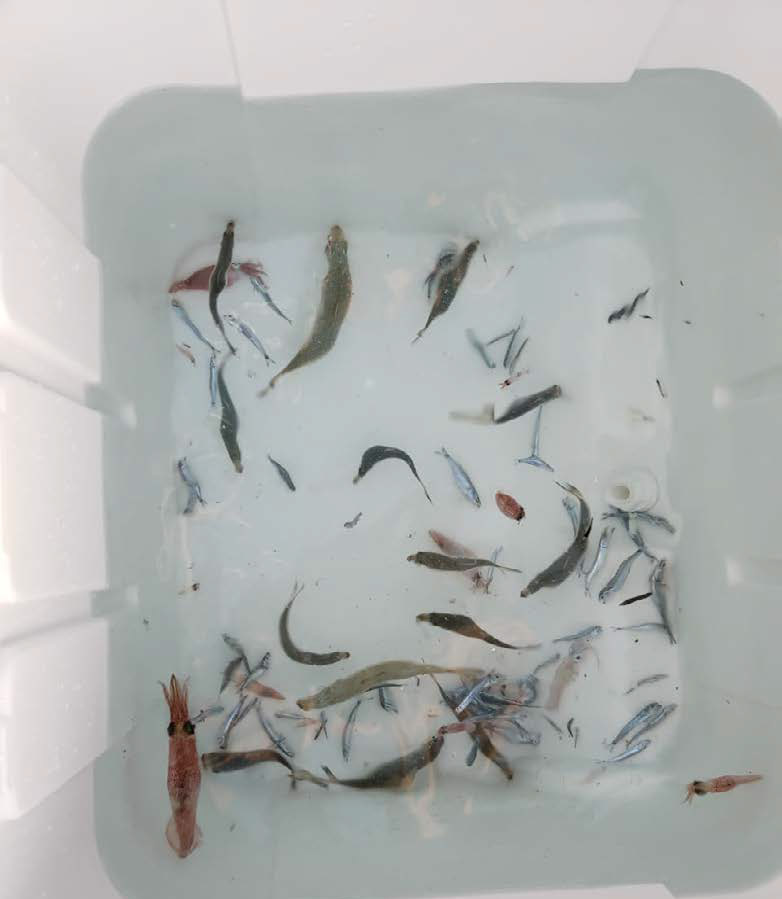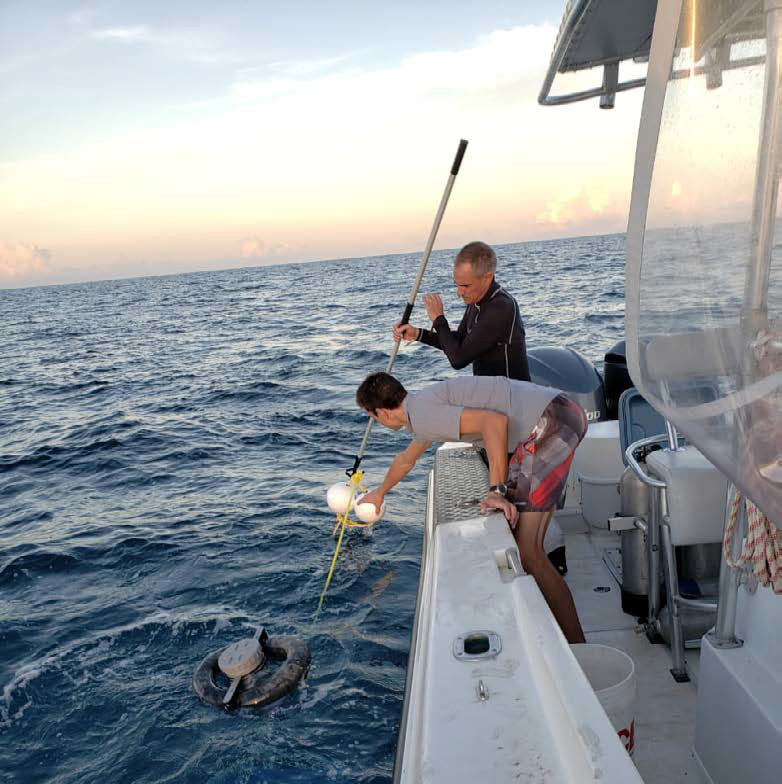It is interesting to note that 90% of the fish larvae, including the grouper, dies during its dispersion in ocean currents, while the recuperation and raising of post-larva fish is an efficient method to increase the number of individuals. But several questions remain. How to catch these tiny little fish? When? Where exactly? How many? And how to recognize them? To help find the answers to these questions, the company, Écocéans, trained the team at the Réserve Naturelle in larval collection, as part of the LIFE program. On October 3, and for a few days after, luminous sampling tubes were deployed in the ocean to collect larvae carried by the currents. The larvae are then moved to a marine milieu where they transform into post-larvae, ready to colonize the coastal waters. This operation takes place at night, as these miniscule animals are attracted by the light, and will be repeated regularly over a period of two years to determine the best moment to recover the grouper larvae. Once this technique has been mastered, the larvae will be raised in an aquarium until they are large enough to return to their natural milieu and have a better chance of survival.
How to help the grouper survive
Récupération des dispositifs - Collecting the tubes in the water

Récupération de post-larves - Collecting post-larval fish

















